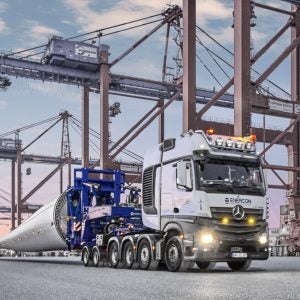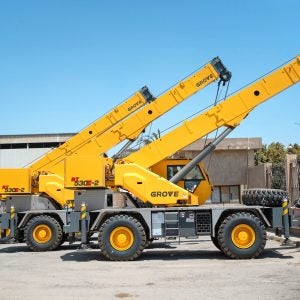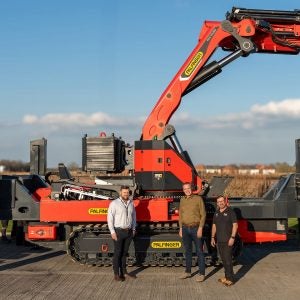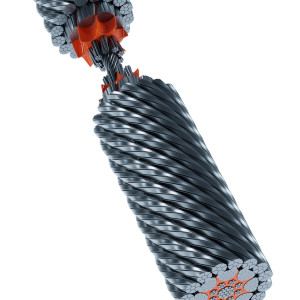I was reminded of this at the Bauma China show in Shanghai, where I saw many Chinese cranes that use imported components. In mobile cranes, for example, the carriers might have Cummins or Mercedes engines, ZF transmissions, Kessler or Dana axles and Hydac suspensions. In the upper there are Rexroth or Hawe hydraulics, Lebus drums, Rotzler winches, PAT load-moment indicators…and Vlassenroot booms, as we discuss starting p29.
Just because a crane uses standard components does not weaken the brand. Cranes are complicated, and their makers need to tap into the thousands of industrial equipment factories around the world that supply parts for the particular mechanical, hydraulic and electrical subsystems that make up their cranes. In my opinion, the main reason why automobile manufacturers make their own engines is because of the sheer volume of cars they produce. A crane maker that sells even 1,000 units a year would be crazy to make its own engines, and would probably still rely on many sourced parts.
Crane manufacturers keep as close an eye on sourced components that they do on parts they make themselves. Raman Joshi, Manitowoc’s new vice president for India, told me at Bauma China that electrical components for Potain tower cranes can be sourced from many locations. He said: “The important thing, it’s not a Chinese component, it’s a Potain component, because it passes Potain’s quality checks.”
I believe that Chinese manufacturers use the components as a mark of quality. But this strategy surely only works in the short term. Importing global components is expensive, because they have to pay global market rates for the components, as well as Chinese import taxes. These costs make it more difficult to keep prices low, which, along with short-term availability, has often been the chief selling point of exported Chinese cranes.
The strategy also subcontracts the problems, and the benefits, of support to foreign dealers. Dealers such as Lewis Equipment in the USA, for Yongmao, and Australian Crane & Machinery, for XCMG, have proved instrumental in the foreign sales of these brands in the last few years. But in doing so, the manufacturers have lost access to the profitable spare parts business that comes with selling any new crane to the dealers.
On the other hand, this strategy does mean that owners of Chinese cranes would be able to get some key parts, whatever happens to the local dealer.






